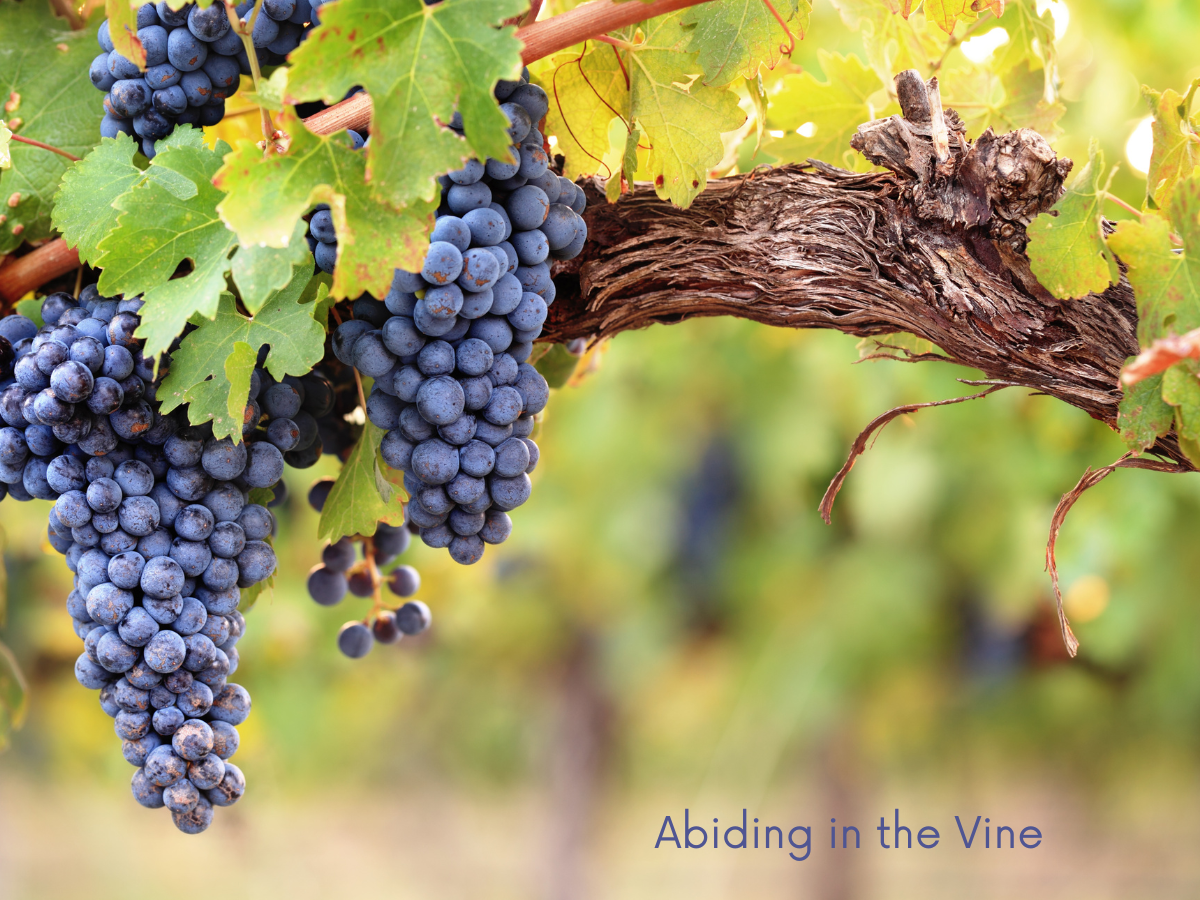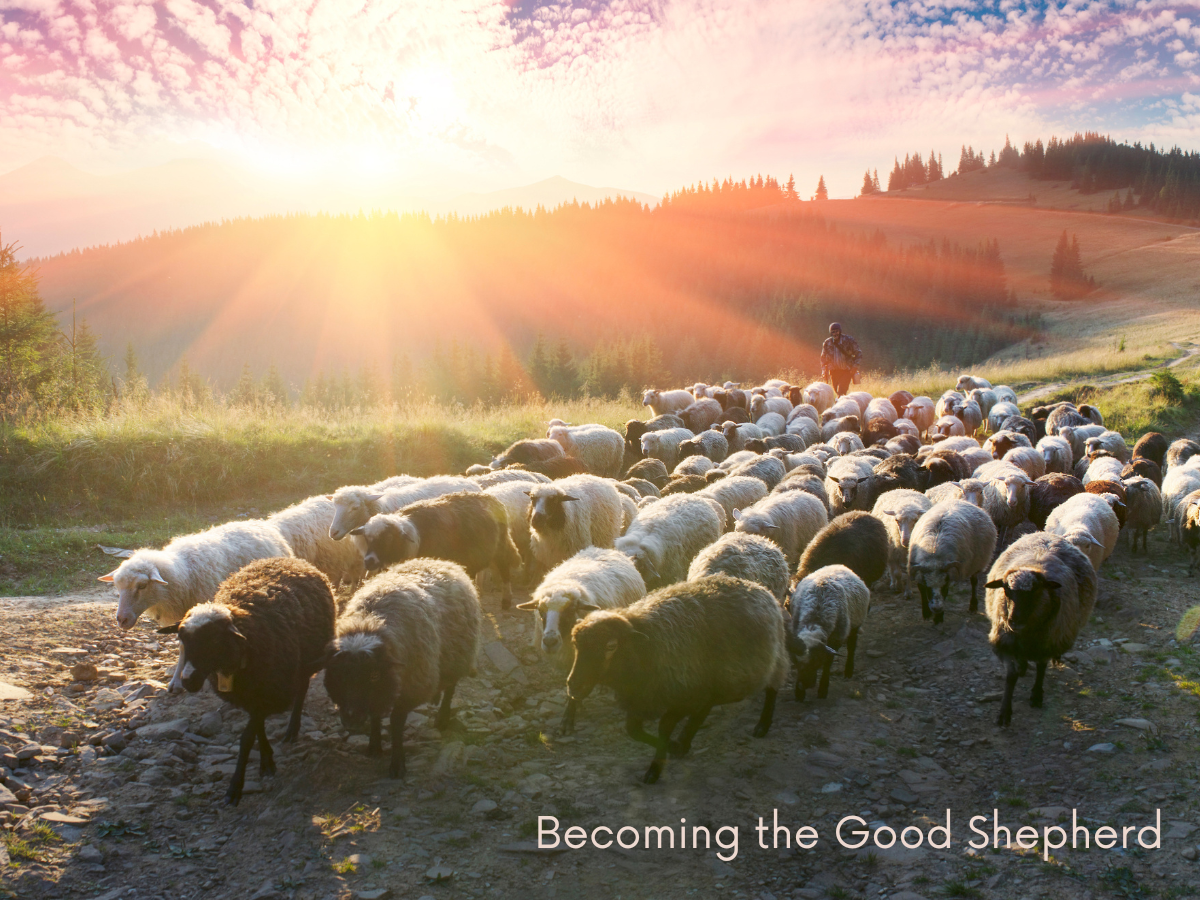Sunday, May 5, 2024 - John 15:9-17 Also Acts 10:44-48, Psalm 98, 1 John 5:1-6 It’s not fun to feel…
The Parable of the Vineyard
Matthew 21:33-46 (Sunday, October 8, 2023)
I’ve rented more than one home in my life. For a period of time when I lived in Marietta, GA, I owned a condominium. But ever since I left Marietta for the northeast Georgia mountains, I’ve been living under someone else’s lease. The farmhouse that I rented in Demorest, GA was idyllic. As soon as I set foot in this 100 year old cottage with beadboard paneling and hardwood floors on eight acres of land, I knew I absolutely had to live there.
As soon as I moved in, I wanted to make it my own. Of course I brought all the usual stuff, but I also added my own little touches like colored glass jars hanging from twine on the front porch where I sometimes lit small candles. Even though I wasn’t the owner of the property, I wanted to make it beautiful, and I wanted to take care of it.
Thankfully, I wasn’t responsible for bushhogging the pastures, but I did my best with the lawn – though after the painful episode with both yellow jackets and fire ants in one evening, I did end up paying a guy to mow it. I planted flowering shrubs in the front even though I knew I’d only enjoy them for a limited time. I made that place my home. But I never forgot who it ultimately belonged to.
Our Gospel reading today is about people entrusted with a vineyard who forgot who it belonged to. When we look at the texts for these next several Sundays in the month of October, we see that they are all about Jesus’s confrontation with the religious authorities and the Temple system that oppressed and abused the poor and working people. We can understand today’s Gospel better when we pull back the camera to get a wider frame.
What sets this confrontation in motion is Jesus’s entry into Jerusalem which happens a couple of chapters back in Matthew. The first thing we notice is that Jesus enters the city on a donkey. He doesn’t come in as a conquering warrior on a great stallion. Matthew quotes Isaiah and Zachariah when he writes, “Tell the daughter of Zion: Look your king is coming to you, humble, and mounted on a donkey.” The Jewish people of Jesus’ time expected that there would be a great battle in Jerusalem at the end of the age. What Matthew does is show Jesus as fulfilling that prophecy but entering Jerusalem not as a warrior armed for battle but rather as a humble peacemaker.
But God’s peace first confronts us with the truth of our situation; it reveals the brokenness and oppression we support and experience. So the first thing Jesus does in Jerusalem is overturn the tables of the moneychangers in the Temple, which is the same as whacking the financial power structures of his day upside the head. After making that bold statement, he reclaims the Temple as a place of healing for the regular poor and working people that are suffering.
No wonder the religious leaders questioned Jesus’s authority! Each time they try to trap him, Jesus responds by teaching in parables and metaphor. Why does he use parables? Matthew 13 says that “Jesus told the crowd all these things in parables; without a parable he told them nothing. This was to fulfill what had been spoken through the prophet: ‘I will open my mouth to speak in parables; I will proclaim what has been hidden from the foundations of the world.’” This verse quotes the prophet Asaph from Psalm 78, and Asaph was called “the seer.” What is it that has been hidden since the very beginning of time? What were they – what are we – not seeing?
This idea of seeing is central to Jesus’ work and mission. Remember that in the Gospel of Luke, Jesus gives us his mission statement when he reads from the scroll of Isaiah, saying:
The Spirit of the Lord is upon me, because he has anointed me to bring good news to the poor. He has sent me to proclaim release to the captives and recovery of sight to the blind, to let the oppressed go free, to proclaim the year of the Lord’s favor.
After reading this text, Jesus said, “Today this scripture has been fulfilled in your hearing.”
Now when Isaiah and Jesus talk about recovering sight to the blind, are they talking about the healing of only one specific physical ailment among hundreds that hurt us? I don’t think so. I think this refers to spiritual sight – it’s about how we see Reality and God’s relationship with the world.
In today’s reading about the landowner and the tenants, and in the Gospels to come in the next few weeks, Jesus shows through parable and metaphor that God’s Reality isn’t at all what we think Reality is or should be – and in some ways, it’s not even what we think is fair. Remember all those workers who got the very same wage no matter what time of the day they turned up?
I believe the questions at the core of our Gospels for today and the next two weeks are – Who is the Source of our Life? What does God want from us? Who do we belong to? And how are we to live in relationship with this Mystery that we call God?
I began by saying how important it is that we understand a particular Gospel text within the context of the passages that surround it. We need to understand the broader narrative. But it is also helpful to look at the historical context. In telling this parable, Jesus is drawing directly from the reading we just heard from Isaiah and the Psalm. Remember, Jesus was a Jew. He was very familiar with those texts, and so in this parable he is using sources that his listeners would automatically understand.
In this story we find several characters. There is the landowner who has set up everything needed in his vineyard. He has planted the vines, put a fence of protection around it, dug a wine press to process the grapes, and even built a watchtower, which was not only another way to protect the crops but was a place of refuge for the family of the vineyard in times of trouble. We see clearly from the Isaiah text that the landowner is God and the vineyard is Israel. The vines are the people themselves, who were expected to bear fruit – the fruit of God’s kingdom on earth.
The landowner prepares this beautiful place and leaves it in the care of tenant farmers, who, we presume, would have been expected to cultivate the crops so that they produced good fruit. At harvest time, those fruits would then be returned to the landowner with a portion kept for the tenants. Here, the tenant farmers represent the chief priests and the Pharisees, the religious authorities of the day. The slaves or servants of the landowner who were sent to collect the harvest represent the prophets sent to Israel, and the landowner’s son is Jesus himself.
In Isaiah’s parable, God – who Isaiah calls “my Beloved” – plants the vineyard to grow the sweet fruits of justice and righteousness but instead it grows the wild or sour grapes of bloodshed and weeping. In the Psalm, we learn that God brought the vine – the people – out of slavery in Egypt and lovingly planted them in a new land, but now the protective wall is broken. Israel is crying out because it’s being attacked by surrounding armies and the psalmist begs God to restore the vineyard’s protection.
Now in Jesus’ version, the tenant farmers kill or beat all of the servants and even the son, because they have rejected the landowner’s claim to the harvest and want to keep the goods for themselves. When Jesus asks what the landowner should do to the tenants, the priests and Pharisees answer that “He will put those wretches to a miserable death and lease the vineyard to other tenants who will give him the produce at the harvest time.”
I can only imagine the looks on their faces when they realized that they were the “wretches” that Jesus was talking about.
When we hear terms like “chief priests,” “Pharisees,” and “Sadducees,” we should understand these individuals as the power elite of that time and place. They were very influential in the royal courts of Kings like Herod. According to an article in U.S. Catholic, the Sadducees competed with the Pharisees in terms of who would have more influence with the royal court and Roman government.
They were also the ones who upheld traditional practices and beliefs and defended worship in the Jerusalem Temple as being crucial the keeping the covenant between God and Israel alive. For them, this was the wall that protected the vineyard. So maybe it’s no surprise that they opposed Jesus “who challenged just about every religious authority he encountered.” In a sense, the Pharisees, Sadducees, and scribes were the “law and order” people of the day. Like all of us, they are complex people who can’t simply be painted as the “bad guys.” But Matthew’s Jesus was definitely in conflict with them.
As I said earlier, Jesus used parables to “proclaim what has been hidden since the foundations of the world.” Over and over, he proclaims hidden truths about God’s mercy on all and God’s love for all without the need for a Temple system of money-changing and taxes. Again, according to U.S. Catholic,
Jesus’ proclamation of a kingdom in which the unclean is clean and the unlawful is lawful turned inside out just about everything Jews of his time believed, giving a new way of living to many but making much of the leadership hostile—a conflict that led eventually to Jesus’ death.
Jesus may be the stone that the builders rejected, but in him, we are promised that our sight will be restored, we will be healed and made free, and we will have life and have it abundantly.
How do we live abundantly in the vineyard of life that God has given us? We remember who we belong to. Like Isaiah, we remember that God is our Beloved. Like Paul, we live in Christ, remembering that he is the Vine and we are the branches. We never forget that we don’t own this vineyard life of ours – but it’s our job to bear good fruit for God’s kingdom.





This Post Has 0 Comments